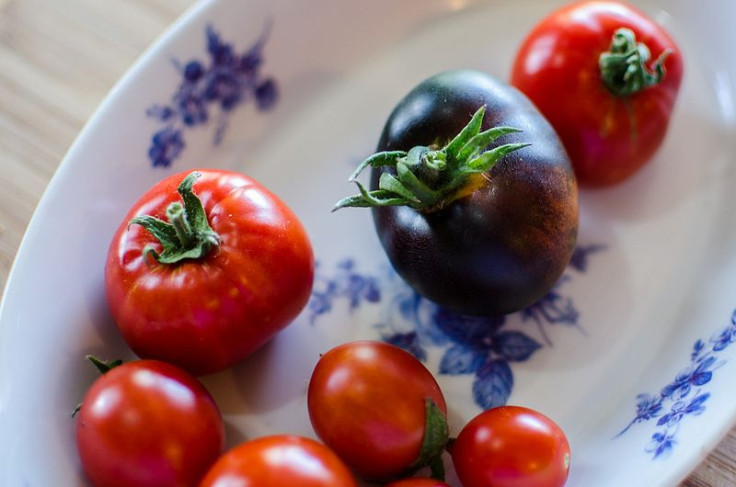A Case For Purple GMO Tomatoes: Taste Better, Last Longer, More Antioxidants

Purple tomatoes may become the next big GMO cash crop, boasting longer shelf life and superior taste, according to a UK study published in today's Current Biology.
"Post-harvest losses due to rotting are such a serious problem for growers and supermarkets that even an increased shelf life of one day would make an enormous difference to them," said first author Yang Zhang, a molecular biologist at the John Innes Centre in Norwich, UK.
The modified tomatoes incorporate two genes from snapdragons to toughen their skin. The genes increase a tomato's production of its natural pigments called anthocyanins. This extra pigment gives the tomato a dark purple color, but is also an antioxidant that has been shown to prevent cancer and cardiovascular disase in mouse models.
Since these special tomatoes were first created in 2008, questions have lingered as to whether or not there are additional benefits of enriching tomatoes with anthocyanins.
"Working with GM tomatoes that are different to normal fruit only by the addition of a specific compound, allows us to pinpoint exactly how to breed in valuable traits," said senior author Dr. Cathie Martin, Ph.D., a professor of metabolic biology at the John Innes Centre.
Zhang, Martin, and colleagues found that these purple GMO tomatoes last twice as long as regular red tomatoes. Regular red tomatoes grew soft and lost a majority of their ripeness after three weeks, while it took a month-and-a-half for the purple variety to do the same.
The heavy food demands of urbanized life often require that tomatoes be picked from the vine before they are fully ripe. Tomatoes are subsequently kept at lower temperatures for longer periods and exposed to chemicals, such as ethylene, during transit to change their color and induce ripeness before reaching the supermarket.
Purple GMO tomatoes, however, would not require as much refrigeration or exposure to ethylene given their hardiness.
Modern food culture also necessitates the transport of produce over long distances, but sometimes a tomato's protective skin is wounded while it is bouncing around in the back of a truck. A break in the skin can make the fruit susceptible to infection by bacteria, ruining a shipment.
The researchers found that purple tomatoes are more resistant to infection by Botrytis cinerea, a grey mold that decimates tomato crops and infuriates farmers.
Most criticisms with GMO crops revolve around the possibility that tinkering with a plant's DNA could disrupt its natural gene environment and have dangerous consequences.
In this study, the researchers used a special DNA delivery system - a binary vector plasmid - that introduces the traits into the tomato without disrupting the tomato's genetic architecture. Stalwart opponents of modified crops could also begin selecting and crossbreeding conventional tomatoes that happen to have higher levels of antioxidant anthocyanins.
"Our research has identified a new target for breeders to produce tomato varieties that are fuller in flavour, and so more appealing to consumers, and more valuable commercially due to increased shelf life," said Martin.
Source: Zhang Y, Butelli E, De Stefano R, et al. Anthocyanins Double the Shelf Life of Tomatoes by Delaying Overripening and Reducing Susceptibility to Gray Mold. Current Biology. 2013



























